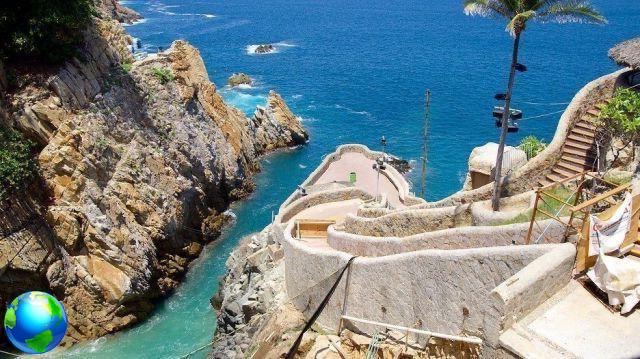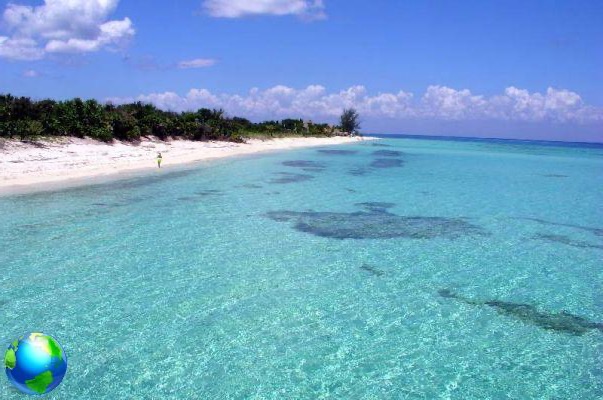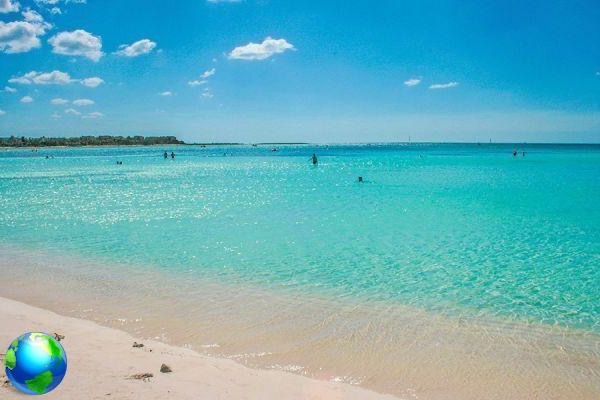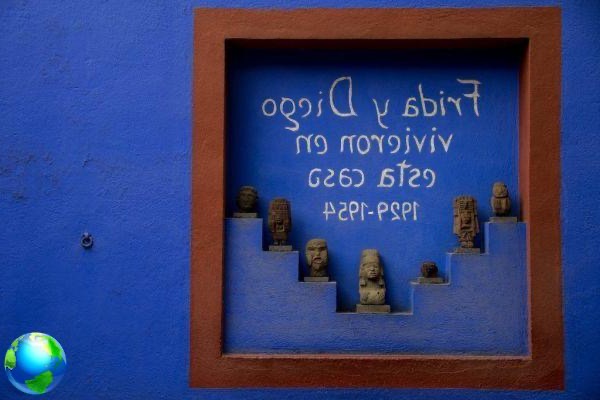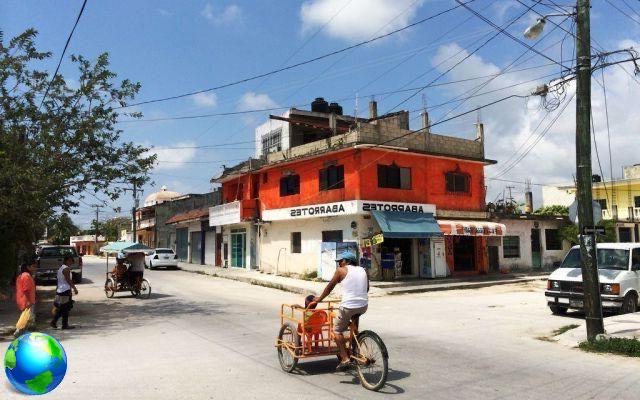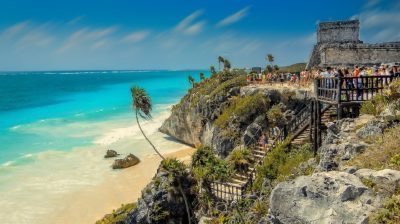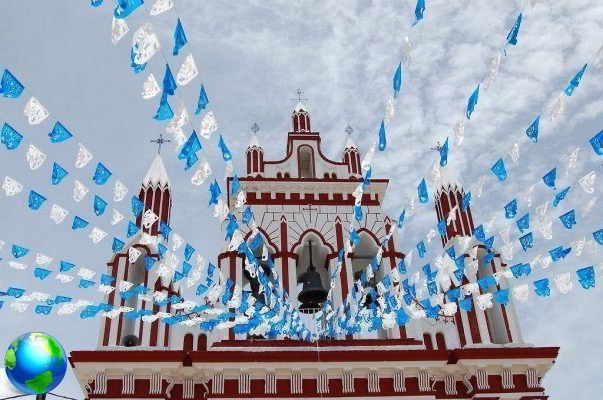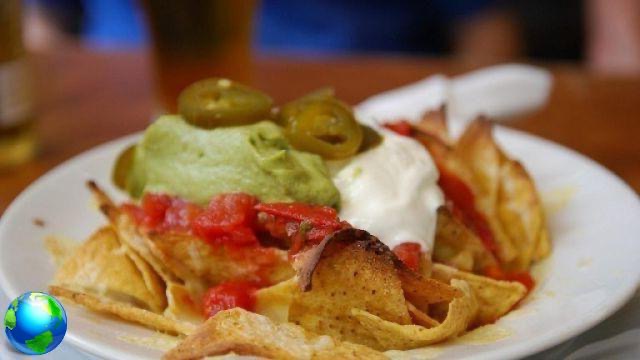Il Chiapas is one of the 32 states that make up Mexico and it is located between the Yucatan Peninsula and the states of Oaxaca, Veracruz and Tabasco. To the south it borders with Guatemala (with which it shares a lot in terms of customs, crafts, territory) and it has remained one of the most authentic states that you can visit during a trip to Mexico. Chiapas is inhabited by large communities of native Indians (including the Tzotzil people) and Mayan dialects are still spoken here (including Chan Santa Cruz Maya and Tzotzil). If you arrive in Chiapas after visiting the Yucatan or Quintana Roo (Playa del Carmen to be clear), the differences will jump to your eyes. First of all the geographical / landscape ones. Except for a small flat part near Tuxla Gutierrez, the rest of Chiapas is mountainous and characterized by jungle, lakes and wonderful waterfalls. Far fewer tourists arrive here (thankfully very few Americans!) And prices are much lower than in neighboring regions. I had already been there as a young girl, almost 20 years ago, and to tell you all, it hasn't changed much (which I think is a great asset these days!).
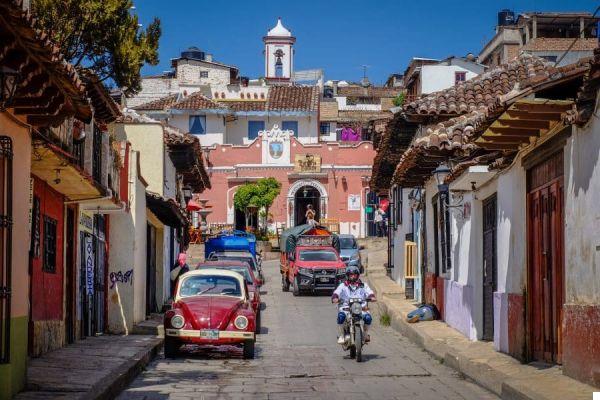
Find out when to go to Chiapas: the best time to visit it
In Chiapas there is not a great temperature range between the various months of the year, the minimums oscillate between 16 ° and 20 ° and the maximums between 22 ° and 26 °; the difference is rather in the level of humidity and rainfall. On average, i warmest months are March, April, May, July and August, While rainiest are June, August and September. It follows that the best months, that is the dry season, are indicatively from January to March and from October to December, but you can almost always go to Chiapas.
Health insurance is required
In Mexico our health coverage is not valid. My advice is to always take a classic medical-luggage insurance that can cover you during the trip. I am very happy with many insurance companies, a site that compares the policies of different companies and proposes the most convenient policy for that particular trip. To do this you will have to enter the data relating to your trip (country, duration, etc.) and they will send you an email with the best proposal that you can then buy directly online.

How to get to Chiapas and how to get around
By plane
Chiapas's main airport is located in the capital, Tuxla Gutierrez (which is then 1 hour from San Cristobal de las Casas), but if you have to reach Palenque you should fly to Villahermosa (in the Tabasco region). From here it will take approximately 2 hours to reach Palenque. If you want to optimize your times, the best thing is to fly to Villahermosa on the outward journey and then leave from Tuxla Gutierrez. Both airports are reached by flights that depart from all cities of Mexico, every day, thanks above all to the service offered by two excellent low-cost airlines: Viva Aerobus e Volaris (if you are afraid, know that all the planes are brand new!). From both airports you will also find direct buses to reach San Cristobal and Palenque.
By bus (collectives or combis)
The whole flat part of the region is served by a dense bus network (mainly of the ADO company) long-distance routes that reach Mérida, Cancun, Playa del Carmen, Oxxaca, etc. The mountainous region, on the other hand, is mainly served by collectivos, i.e. the classic minivans that you find throughout Central and South America, and the roads are often a bit bumpy (especially the road that goes from Palenque to San Cristobal, 5 hours of curves and bumps !). With the collectivos you can also easily reach Guatemala.

One week itinerary in Chiapas
- Flight over Villahermosa and night a Palenque
- Visit of the archaeological site of Palenque + Roberto Barrios waterfalls+ arrival in San Cristobal in the evening (cost approx. 450 pesos)
- San Cristobal: visit of Canyon del Sumidero + Chiapa de Corzo (cost ca 320 pesos)
- San Cristobal: city tour
- San Cristobal: visit of San Juan Chamula e Zinacantan (with i collectives)
- San Cristobal: visit of the Chiflon waterfall and Montebello lake (cost ca 300 pesos)
- Visit of Oventic and return flight from Tuxla Gutierrez (with collectivos - transfer to the private airport at 700 pesos)

What to see in Chiapas: all the places not to be missed
The ruins of Palenque
The first place to visit when you arrive in Chiapas is definitely him! Palenque is perhaps the most impressive Mayan city in all of Mexico because here the landscape of the tropical forest blends with the pre-Columbine architecture. It is the Mayan site par excellence and its archaeological area has never ceased to fascinate visitors since its discovery at the end of the 700s. However, excavations only began in the mid-twentieth century and to this day not even 20% of the ancient city of Palenque (which was called Baak) has been freed from the forest. Proceeding from the entrance, the first ruins you encounter are those of the great one Temple of the Inscriptions, inside which in 1949 the Mortuary of Commander Pakal. It was hidden deep inside the pyramid and cannot be visited. In the Museum of the archaeological site (not to be missed!), However, you will find a faithful reconstruction. In front there is then the Palazzo, a magnificent structure that hides 9-10 other buildings inside (go up and explore them all!). From there you cross the river and then move towards the Temple of the Sun, the Temple de la Cruz (from the top of which you can enjoy a magnificent view of the whole site) and the little one Temple of the Foliate Cross. There are also many other buildings, more or less reconstructed, scattered in the forest and a path that proceeds along the river and allows you to reach the very valid museum (which is located below the archaeological site). If you want, you can also take a guided tour of the forest (as well as the ruins), but use only official guides and not the various boys who will offer you tours for 100 pesos (especially if you travel as single women). Allow a minimum of 3 hours to visit the ruins (the area is extensive and the museum is also worth seeing). The site of Palenque is located a few kilometers outside the town of Palenque and can be reached with tours (sold by all agencies, often also combining the visit to the Agua Azul or Roberto Barrios waterfalls) or with the collectivos that pass in front of the Terminal ADO.

Roberto Barrios waterfalls or Agua Azul waterfalls?
When I was in Chiapas for the first time, 20 years ago, they offered tourists to visit only the Agua Azul waterfalls (which are located almost halfway between Palenque and San Cristobal). They are wonderful waterfalls that interrupt the tropical forest and, between one waterfall and another, natural pools are formed in which you can bathe. Having been known (and touristically exploited) for a long time, now they are definitely full of tourists, stalls, etc., and are losing some of their charm. On the advice of a friend, I therefore chose not to go back, but to visit other waterfalls closer to Palenque and little known: the Roberto Barrios waterfalls. Here I found very few people (most were local by the way) and I felt a bit like Brooke Shields in the Blue Lagoon. Here too there are several waterfalls like in Agua Azul but the pools that form are larger and it can also swim practically in solitude. It is heaven! In Roberto Barrios there is only a mini restaurant and a bathroom, but it is really all you need to fully enjoy this fairytale place!


Sumidero Canyon
La gita to Canyon del Sumidero it is an absolute must. The walls of the canyon on the Rio Grijalva river (also called Sumidero) are very high (over 1000 meters!) And rise vertically on both sides of the river; in some places you will feel like you are in a fjord! The boats are moored under the bridge of Chiapa de Corzo and it is from here that we start with the very fast spears to explore the canyon. The rocks of the canyon are covered in vegetation and represent the perfect habitat for many species of birds, such as cormorants and pelicans. The river is also full of alligators (and you can usually see several). The excursion on the river lasts about 2h and we sail almost to the Chicoasen dam. After the boat trip, the excursion normally continues with the view of the canyon from above from one of the several miradores on the scenic route that runs along the canyon walls.

San Cristóbal de las Casas
San Cristobal de las Casas is also called "magic pueblo", and indeed there is something magical! When you get there from Palenque, climbing slowly up the mountains (it is located at an altitude of 2200 meters), one has the impression of stepping back in time. San Cristobal is among the most beautiful colonial cities in Mexico and is an absolutely unmissable stop! Nestled in the mountains, the town is made up of low and colorful houses, cobbled streets, markets, churches and magnificent squares. It is a very lively city, full of people, bars and clubs and leaving here was a real torture for me! Apart from this, it is also the perfect starting point for visiting many places such as the Sumidero canyon, the El Chiflon waterfall, the Montebello lake and the villages of San Juan Chamula, Zinacantan and Oventic (all these trips can be booked through the many agencies you find in the city). Get lost in its streets without having a precise destination and savor all the magic of this magical pueblo, but don't forget to see the "musts", namely:
- the cathedral (at sunset it's crazy!)
- the Zocalo (the main square with beautiful arcaded buildings)
- the Church of the Convent of Santo Domingo
- the artesania market (it's the best place in Chiapas to buy !!)
- the fruit and vegetable market
- l'Church of Carmen
- the view over the city from the Iglesia de San Cristobal
- the view from the Cerro di Guadalupe (with the church)
- Casa Na Bolom: a beautiful museum on the life of the Indian peoples
- Plaza del Cerrillo and all the surrounding colorful streets
- an aperitif with a view at Mudra
- an evening at the Revolution


El Chiflon waterfall and Montebello lake
The excursion to the El Chiflon waterfall and Lake Montebello is one of the longest among those that can be done starting from San Cristobal, but it is absolutely worth it. We leave early in the morning to reach, after 2/2 and a half hours, the magnificent El Chiflon waterfall. There are 2 paths to climb up to the main jump, and both run along either side of the river. The trails are managed by two different cooperatives so you pay for 2 different tickets, but you will only have time to go up from one of the two sides. The paths are mostly made up of steps and the views as they open up are splendid! The three waterfalls that meet are of increasing beauty up to the Veil, the most colossal. Going down, I advise you to stop and swim in one of the many bodies of water that open up along the river, it will be the right reward after the sweat of the climb. After the waterfall, we then continue to visit the Montebello lakes region, which is located right on the border with Guatemala, and it is a protected area since 1959. Along the carretera fronterizia there are several lagoons, one more beautiful than the other: the Laguna de Colores, Blue Forest and Five Lagoons.. just to name a few. From here we leave happily ever after towards San Cristobal and arrive around 8 in the evening.

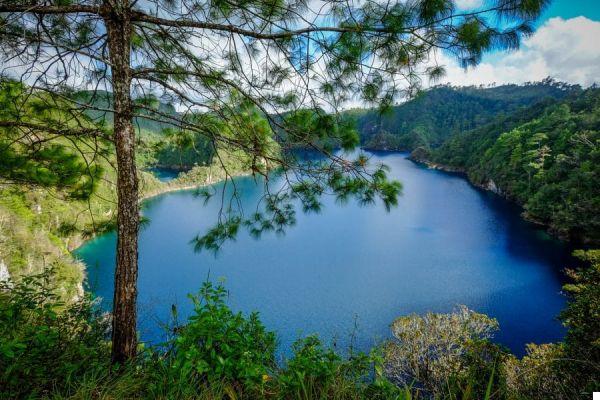
San Juan de Chamula
Il small village of San Juan de Chamula it is located 10 kilometers from San Cristobal and can be reached easily with the combis in 15 minutes. Inhabited by three communities of Indians, after the conquest of the Spaniards, these communities did not fully convert to the new religion and merged their pagan beliefs with the monotheism of Christianity. The result of this can be seen first hand in the small church in the main square which is by far the most amazing church I have ever seen! Inside there is an empty nave, without chairs, on the floor a mountain of pine needles, the scent of incense that pervades everything, on the walls Christian images and icons and dozens of Indians sitting on the ground with hundreds of candles in front. Indians come here to pray and for very special ex-votos. In this community, if someone gets sick, he is taken to the curandero and it will be he who will tell him the seriousness of the illness; according to the level of severity, the sick person or relatives in his stead, go to this church to perform the rites requested by the curandero. If the situation is serious, the ritual involves the use of a live chicken, which will "absorb" all the patient's illness and then be killed directly in the church. All this happens with a certain naturalness, but for sure it won't happen often in your life to see 10 chickens necked within half an hour inside a church! Unfortunately, you can't take pictures inside and don't even try to do it because your camera will be confiscated! Actually, even outside the church, Indians don't like being photographed, so always avoid or ask first. However, this village is a marvel, you will see people with very special sheep's clothing and don't forget to go to the cemetery: it seems festively decorated! Absolutely UNMISSABLE !!


Oventic: il caracoles zapatista
I close the article with a gem, which few know and where few go. This village is located about 1 hour by road from San Cristobal and is one of the 5 Caracoles, that is one of the five five social, political and cultural meeting points of the Zapatista autonomy. This movement of Marxist orientation, which defines itself "Zapatista Army of Liberation" (EZLN), claims greater autonomy for indigenous peoples and came into the open in 1994 when it occupied many towns in Chiapas, including San Cristobal. Today the situation has cooled down a lot, but the movement is always active and the 5 caracoles are proof of this. Oventic is an autonomous city, with its own school and health system, and you can touch it if you visit it. In Oventic there are also many international observers, Belgian and Basque, and several volunteers.
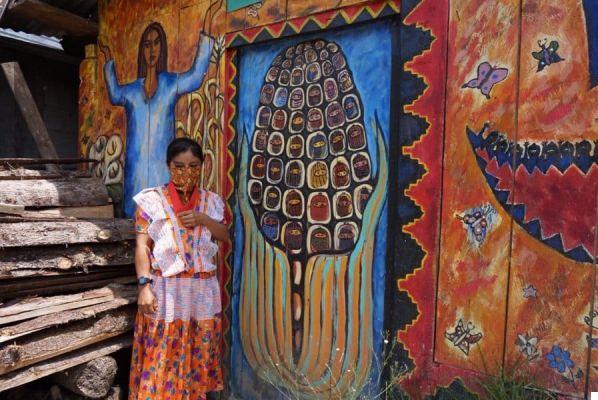

Dove will sleep at San Cristobal de las Casas
Hostal Central 22 . At Hostal Central 22 you feel at home, as soon as you cross the entrance and the large kitchen appears on the right. The dormitories are for 4 or 6, very clean and quite spacious. The central lounge and the small terrace with the hammocks on the roof are also very nice. The breakfast is really great! The icing on the cake, as the name suggests .. is super "central"! Book early as it is always full.
Panda Hostel . The other hostel that beats it is the Panda. It is slightly more off-center, but it is very beautiful too, with large common areas and a nice garden. The dormitories are for 6 and 10.

Where sleeping in Palenque
Janaab Palenque House . This small hotel is located near the ADO bus station and a short walk from the main road and has both double and quadruple rooms. It is very clean and the staff are really nice.
Hotel Maya Tulipanes Palenque . If you want a little extra comfort and maybe a swimming pool to cool off in after visiting the ruins of Palenque, Maya Tulipanes is a great choice. It is located behind the Janaab house and has all the comforts of a 4-star hotel.





